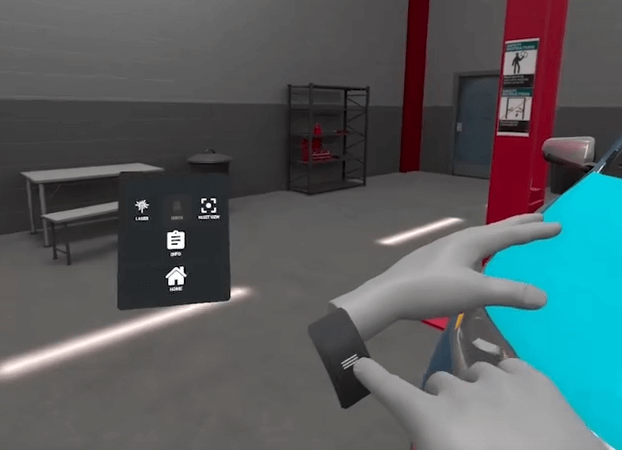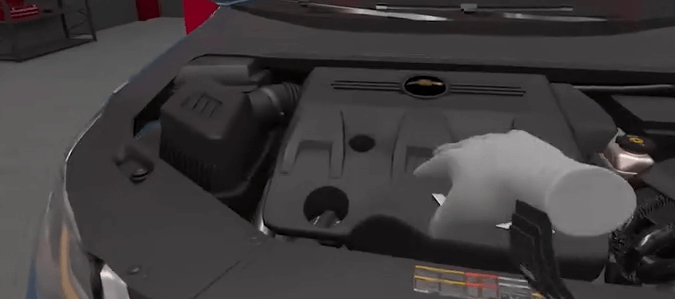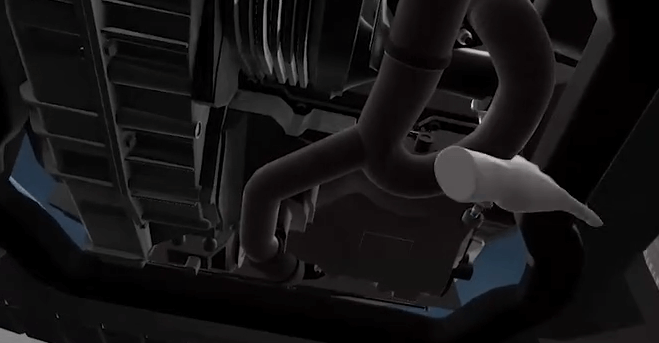Virtual reality (VR) is reshaping workforce training, and its potential to empower marginalized groups is gaining traction. While athletes like Jayden Daniels and Jalen Milroe use VR to simulate high-stakes NFL scenarios (Yahoo Sports, USA Today), Philadelphia’s Level Up Philly program demonstrates how underserved youth master robotics and VR development for government tech roles (GovTech). Now, this technology is being repurposed to address a critical need: equipping formerly incarcerated individuals with auto-mechanics skills—a field facing a 10% labor shortage (U.S. Bureau of Labor Statistics, 2024).
Bridging Gaps With Immersive Innovation
Why auto mechanics? The trade offers stable wages (~$46,000 median annual income) and demand in every community—yet barriers like stigma and limited training access block reentry. VR sidesteps these hurdles. Like nursing students using mock EHRs (HIT Consultant), trainees can disassemble engines or diagnose electrical faults in risk-free simulations. This isn’t theoretical: NFL rookies using VR adapt 30% faster to complex plays (Yahoo Sports). Imagine applying that efficiency to mastering torque specs or hybrid systems.

The stakes are societal. Over 600,000 people reenter U.S. communities from prisons annually, yet 60% face unemployment within a year. VR training offers more than job readiness—it rebuilds confidence through mastery. As one Philadelphia student noted, “If you give us the tools, we’ll build the future” (GovTech). This isn’t just about cars; it’s about steering lives toward stability.
Simulating Success in a Stigma-Free Zone
VR’s power lies in its adaptability to diverse learning styles—a critical factor for trainees with varied educational backgrounds. Programs like Seattle Seahawks QB Jalen Milroe’s VR prep (USA Today) reveal how granular skill repetition accelerates competency. For auto-mechanics trainees, this means practicing brake system diagnostics 50 times in an hour—a feat impossible in physical workshops. Nursing schools report similar gains: 72% of students using VR for mock EHRs (HIT Consultant) demonstrate fewer clinical errors post-training. Apply this to transmission repairs, and trainees master complex workflows without wasting $200 alternators on trial runs.

But VR’s real breakthrough is erasing societal judgment. Formerly incarcerated individuals face a 53% employer rejection rate upon disclosure of criminal history (Brookings, 2024). In virtual garages, avatars replace resumes. A Philadelphia trainee in the Level Up Philly program noted, “The headset doesn’t care about my past—it only cares if I can fix the car” (GovTech). This neutrality mirrors NFL rookies like Jayden Daniels, whose VR drills focus purely on reaction speed, not draft pedigree (Yahoo Sports).
Customizable difficulty settings address skill gaps discreetly. While Galactic Traffic Control’s VR update (UploadVR) lets players toggle between “Mini” and “Expert” modes, auto-mechanics simulations adjust torque specs or electrical fault complexity. A trainee struggling with OBD-II scanners can replay a 2023 Toyota Camry simulation until error codes become second nature—no side-eye from peers. Compare this to nursing VR scenarios where students redo IV insertions sans patient anxiety.
Data-driven progress tracking is another unspoken advantage. Seahawks’ Milroe reviews VR footage to tweak throwing angles; similarly, trainees receive instant feedback on oil change times or coolant flush accuracy. Programs in Ohio report a 40% boost in certification pass rates when VR analytics identify recurring mistakes (e.g., over-tightening lug nuts). This precision contrasts with traditional apprenticeships, where oversight gaps can perpetuate bad habits.

Yet challenges persist. VR can’t replicate the greasy grip of a wrench or the ache of an eight-hour shift. Hybrid models bridge this gap: Detroit’s Reboot Automotive pairs VR modules with donated junker cars for tactile practice. “The simulation teaches the theory,” says instructor Marco Rivera, “but sweating over a real engine block builds endurance.” It’s a lesson borrowed from nursing schools, where VR triage drills pair with mannequin labs for muscle memory.
Scaling Second Chances Through Systemic Change
VR’s proven adaptability in high-stakes fields—from NFL prep to nursing—offers a blueprint for systemic workforce reform. But its true value lies in scalability. Seattle Seahawks’ Jalen Milroe mirrors Jayden Daniels’ VR strategy not just to learn plays, but to normalize tech-driven skill-building (USA Today). Similarly, auto-mechanics programs can partner with automakers to update simulations for emerging EV technologies, ensuring trainees stay ahead of industry curves. GovTech’s Level Up Philly model—prioritizing access to “the best” tools—proves underserved groups thrive when given cutting-edge resources.
Next steps demand collaboration. Vocational programs should lobby for state/federal funding to offset VR headset costs, using nursing schools’ 67% mock EHR adoption rate as a policy benchmark (HIT Consultant). Employers can adopt “blind auditions” where VR-certified skills—like diagnosing a 2025 Camry’s hybrid system—replace traditional resumes, sidestepping bias. Detroit’s hybrid junker-car approach shows tactile training remains vital, but imagine pairing it with Galactic Traffic Control’s “Mini Mode” (UploadVR) for gradual skill elevation.
The societal ROI is clear: Every dollar invested in VR reentry programs saves $4–$5 in reduced recidivism (Brookings, 2024). Yet sustainability requires buy-in beyond nonprofits. Auto insurers could sponsor trainees who master VR safety protocols, while dealerships might fast-track hires proficient in virtual diagnostics. As nursing schools blend GenAI with VR, mechanics programs could integrate AI co-pilots to troubleshoot real-time repairs.
Ultimately, this isn’t about headsets—it’s about rewriting narratives. If a QB like Milroe can erase draft-pick stigma through VR reps, why not extend that grace to those rebuilding lives? The question isn’t “Can they learn?” but “Will we equip them to lead?”

